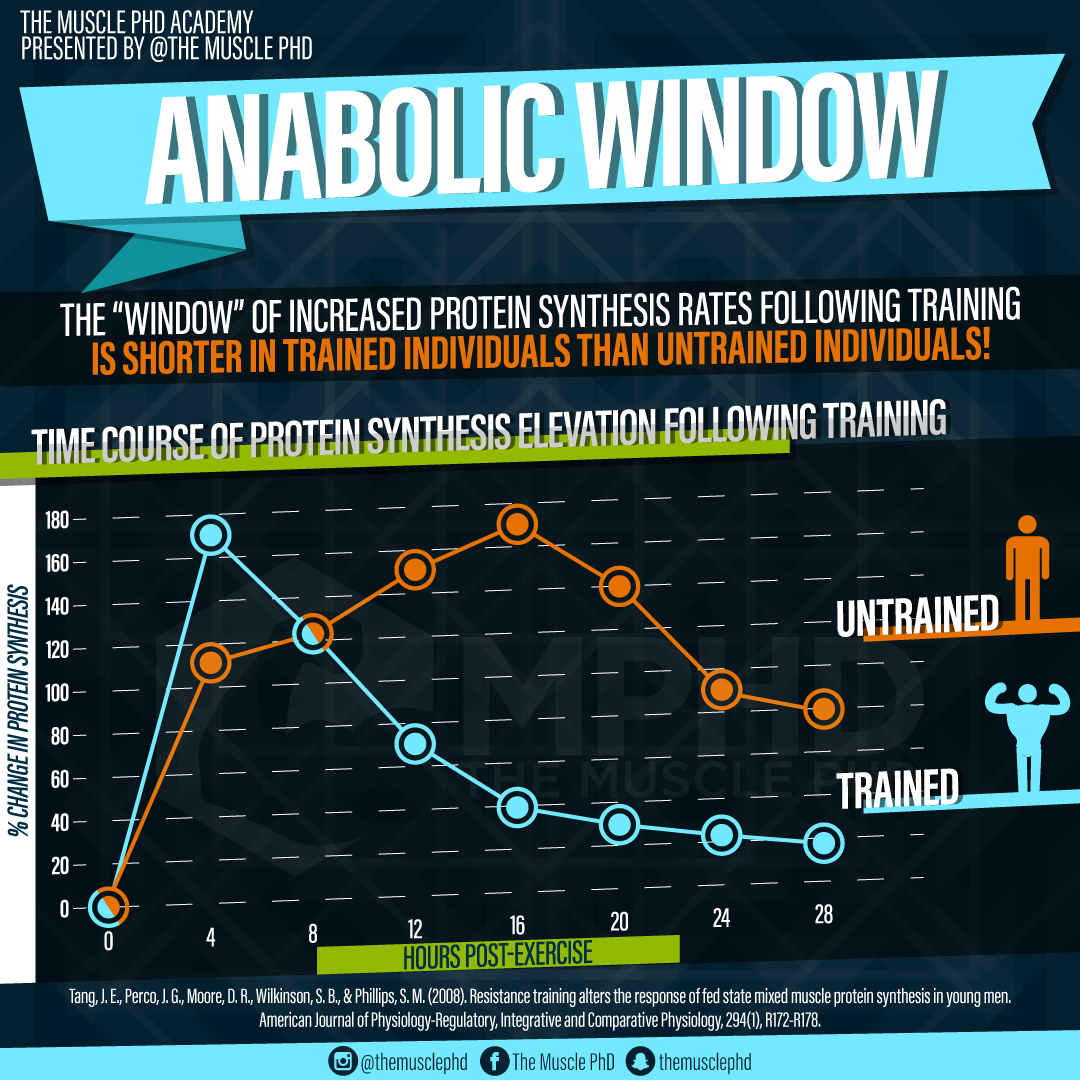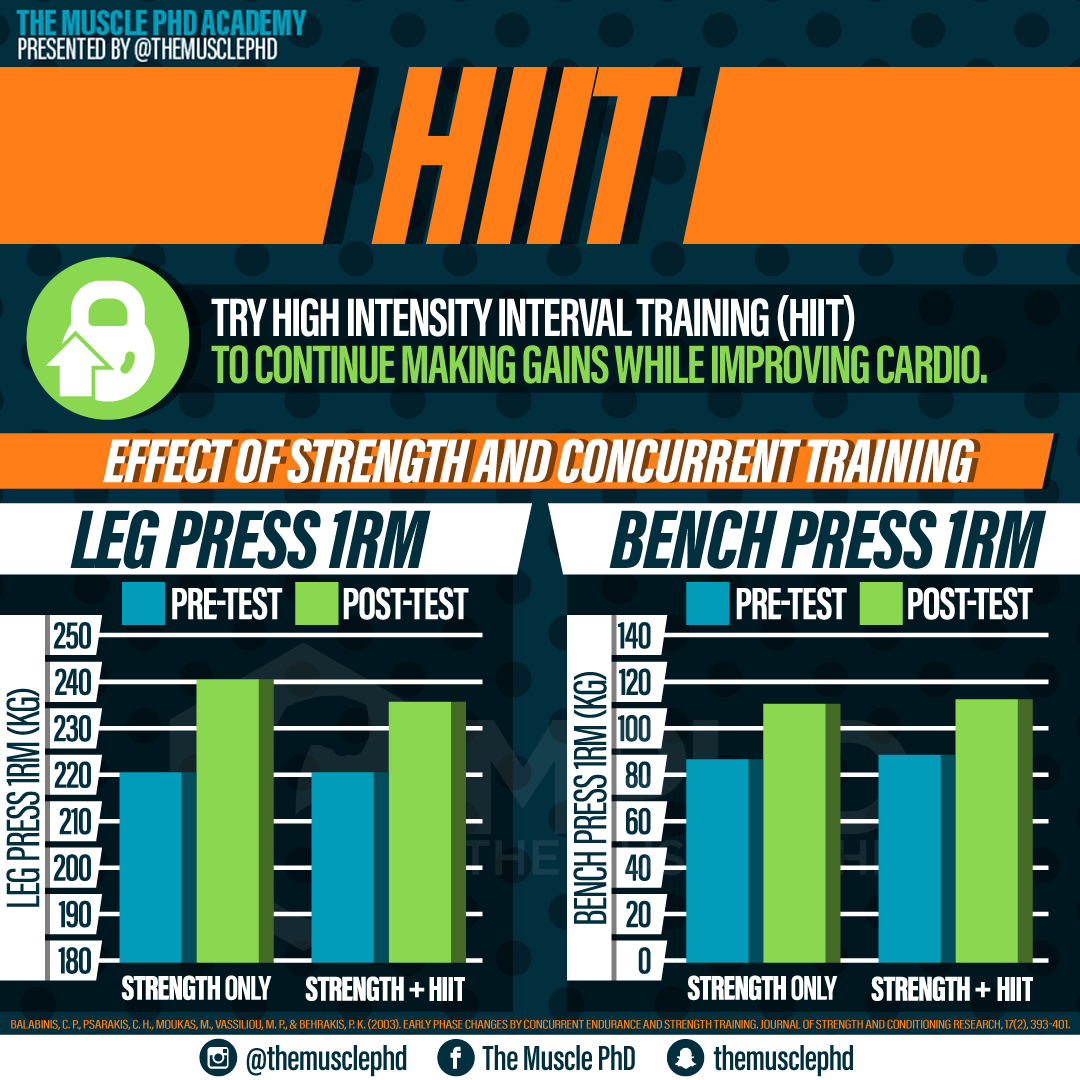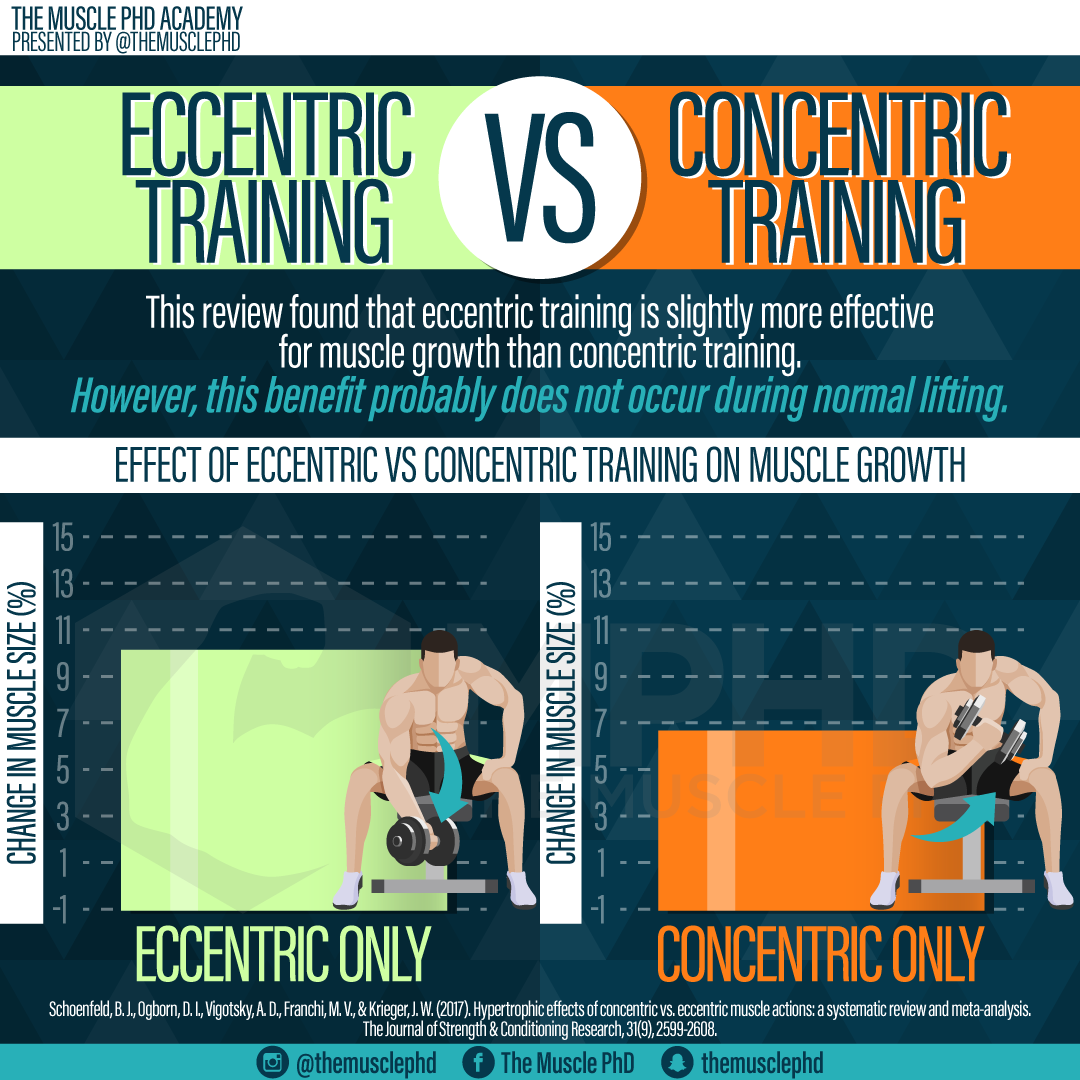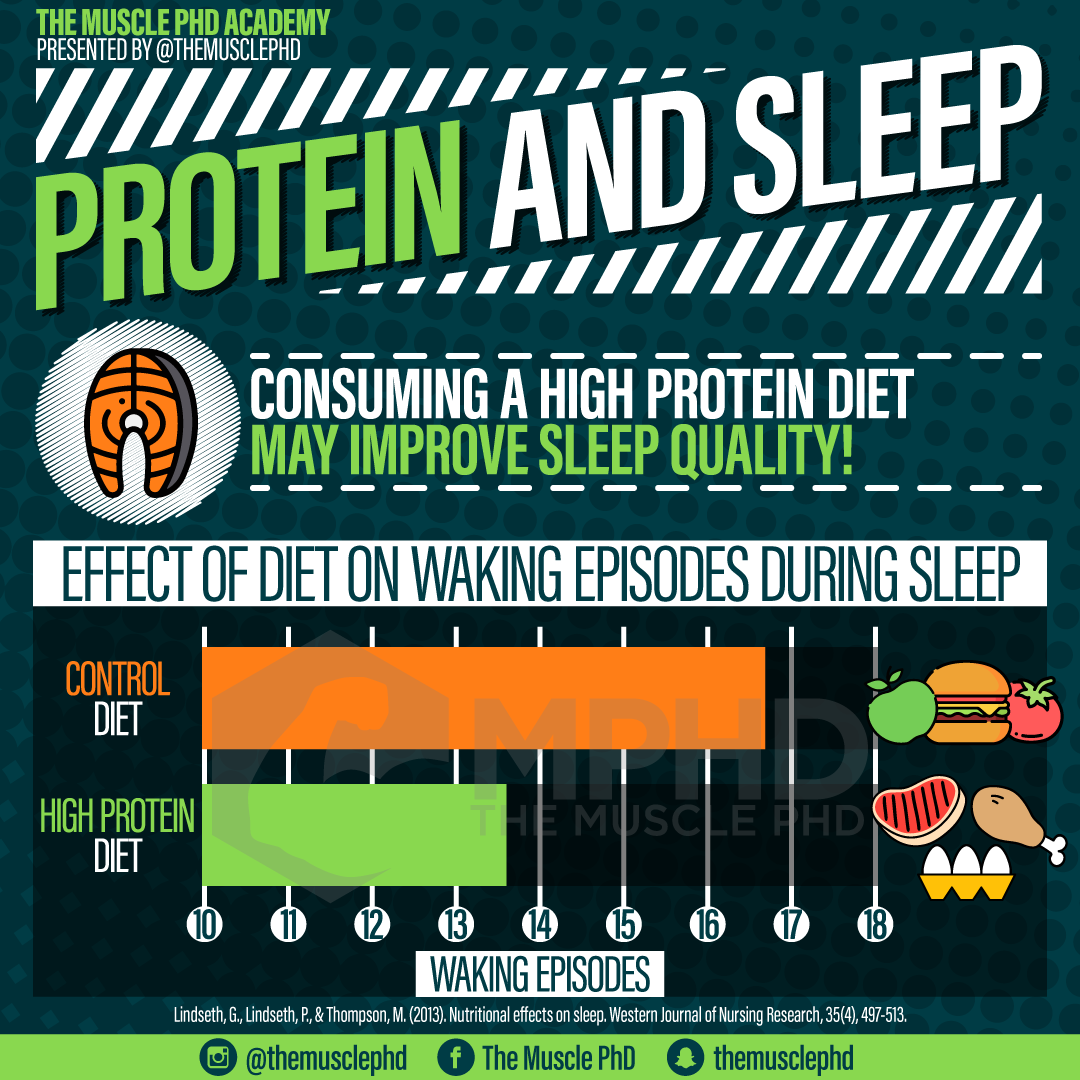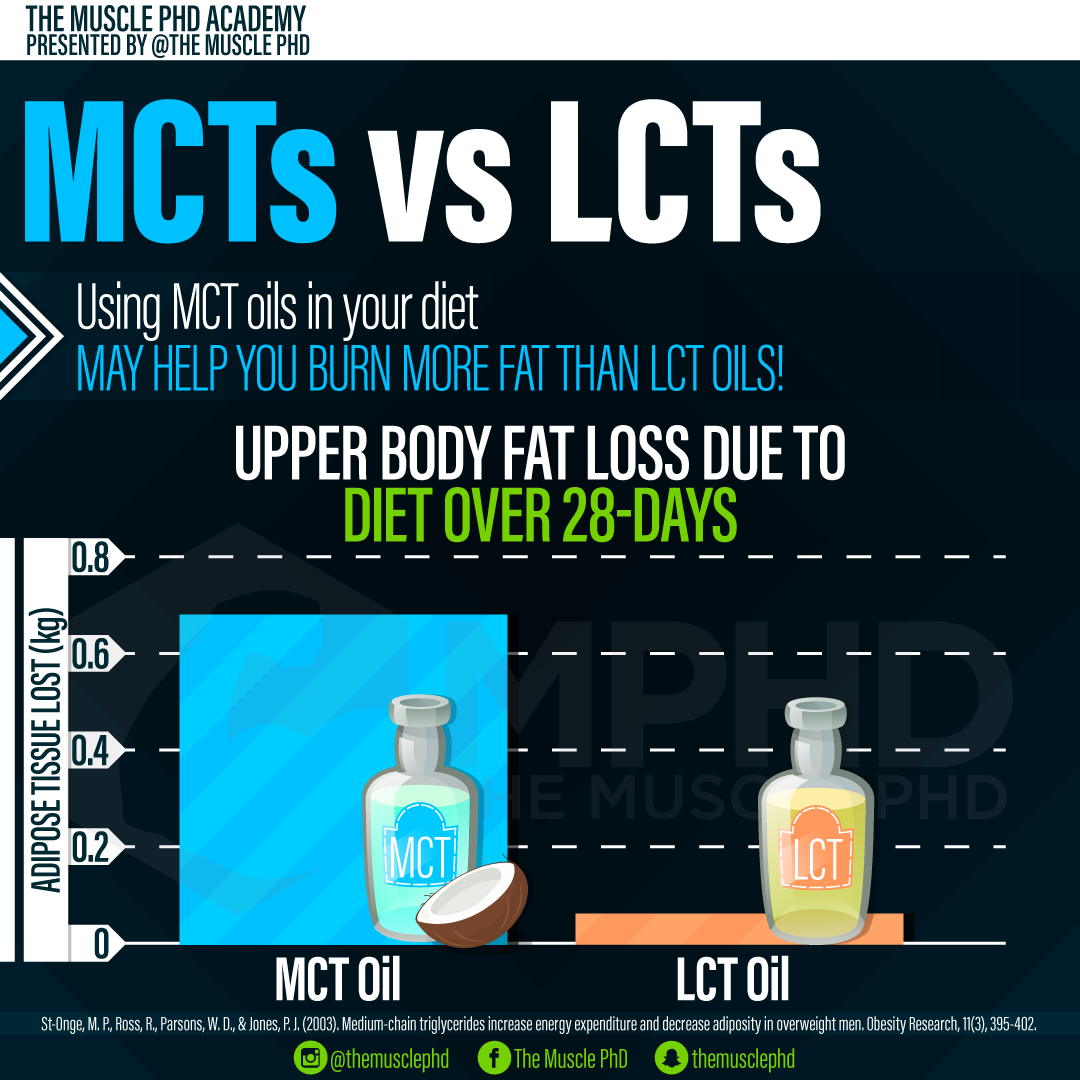Summary: The anabolic window was an amazing marketing slogan in the late 90s and early 2000s. Every supplement manufacturer wanted bodybuilders to know that they needed to consume protein ASAP after training, and the only protein they should be consuming was their product! However, research began to uncover that the anabolic window was much wider than the 30-min interval that these supplement companies were touting and the anabolic window slowly divorced its marketing slogans.
Unfortunately, the majority of exercise-related research is performed on untrained subjects. We know that untrained subjects will adapt more generally to a training program whereas advanced trainers need specific training in order to accomplish their goals. Tang et al. (2008) measured the anabolic window in a group of young men before and after a training program and found that gaining training experience actually reduces the time frame of the anabolic window!
So, that’s great and all, but what’s the anabolic window, exactly? The anabolic window simply represents the amount of time that protein synthesis is elevated following training (independent of food). This means that our muscles receive a stimulus from training and they then signal to the body that they need more proteins to repair and grow their muscle fibers. And, from the results of Tang et al. (2008), it appears that the less training experience you have, the longer your muscles send these signals for growth and repair.
Why is this the case? One major concern with the Tang et al. (2008) study is that the resistance training program didn’t have much variation. With this in mind, the subjects quickly adapted to the program and didn’t require as much muscle repair following training as they did when they first started lifting. With this in mind, periodizing your training so that you utilize new exercises or rep schemes every few weeks is probably a great way to maintain a wider anabolic window. However, as you gain training experience, you’ll also deal with less muscle damage from training due to the repeated bout effect. This means you won’t need quite as much protein signaling following training.
All-in-all, you don’t need a protein shake immediately after your workout. However, we still recommend consuming protein ASAP after training so you can spend more time in a recovery state. There’s no benefit in waiting to consume food after training, so you might as well get on it as soon as possible.
Based on:


